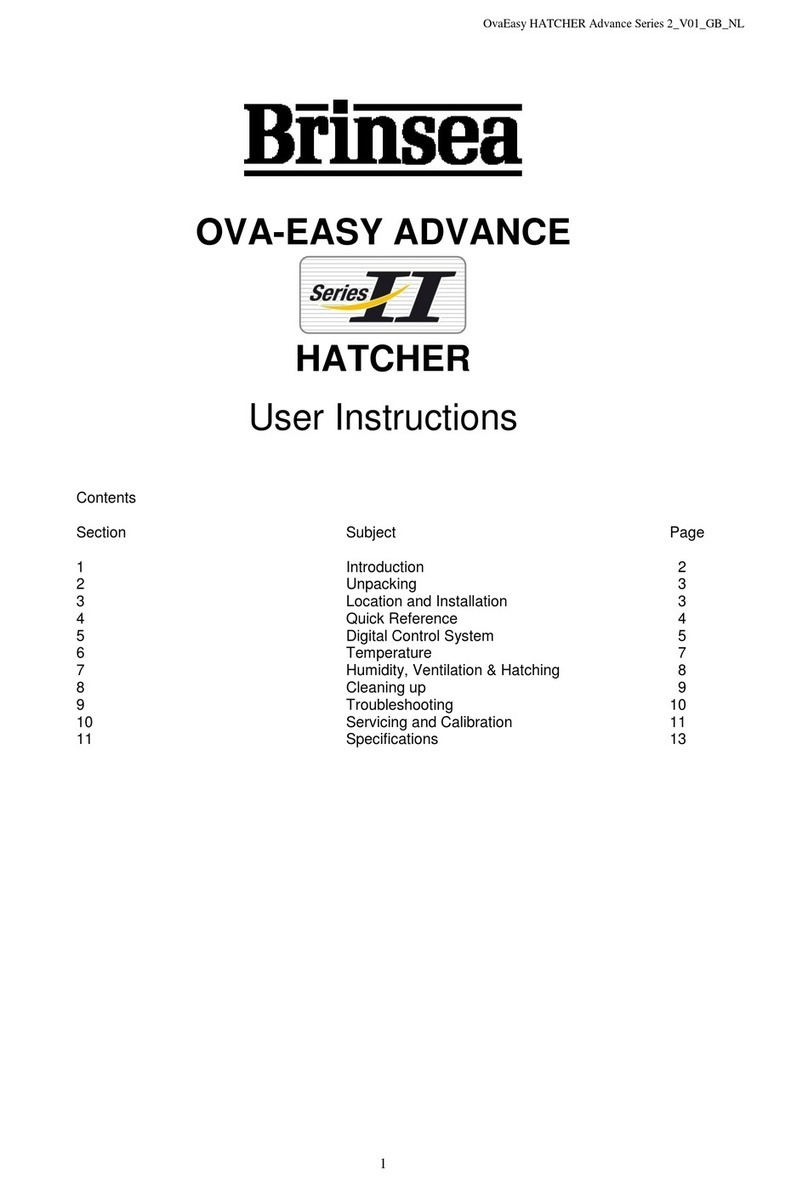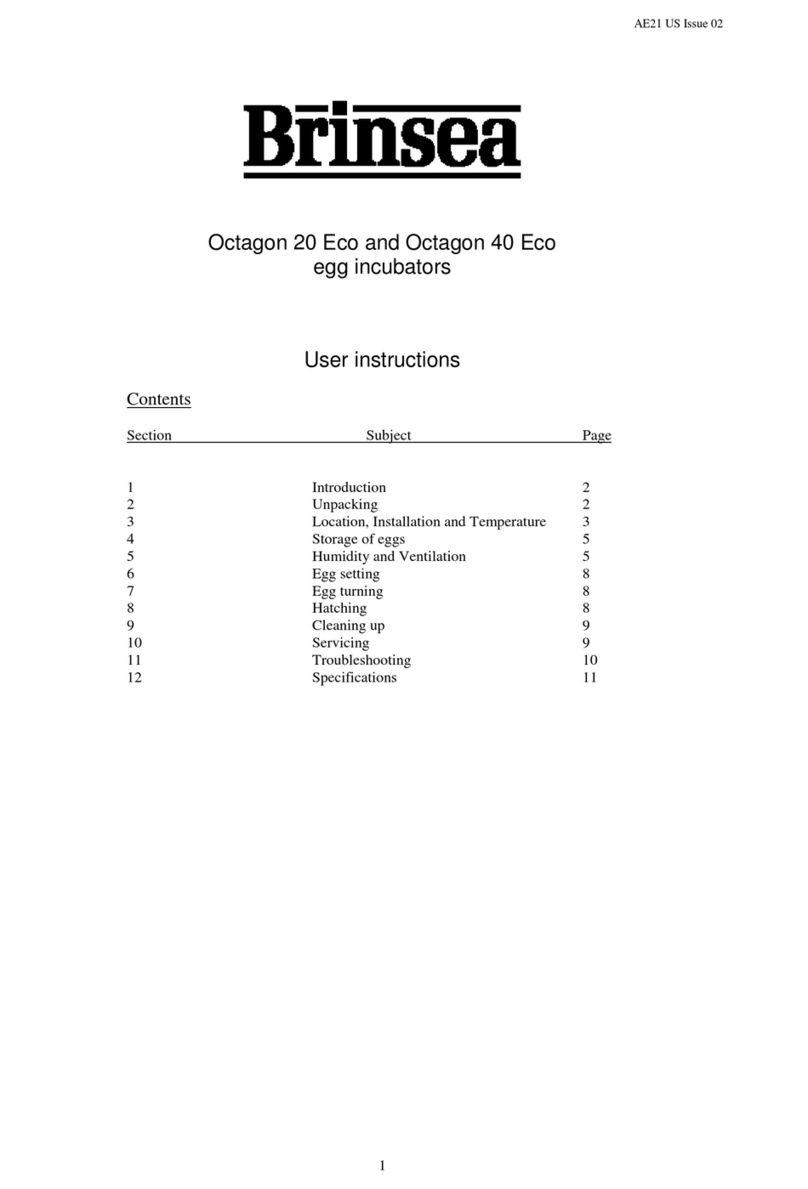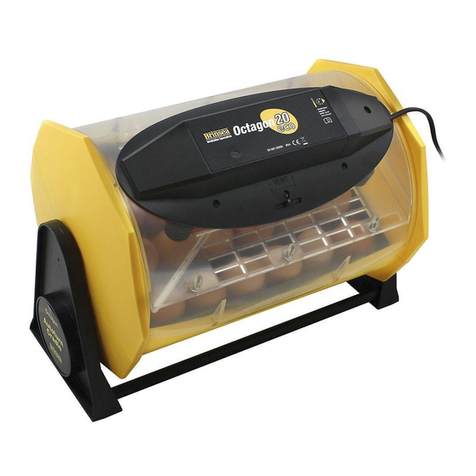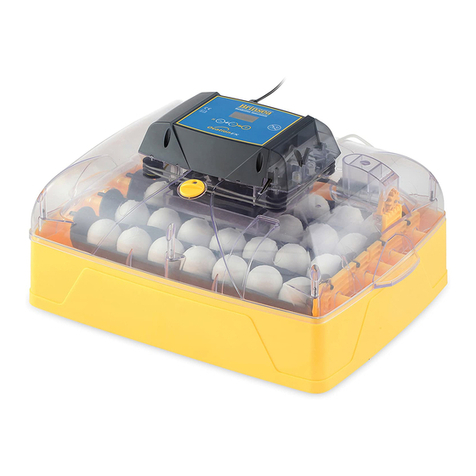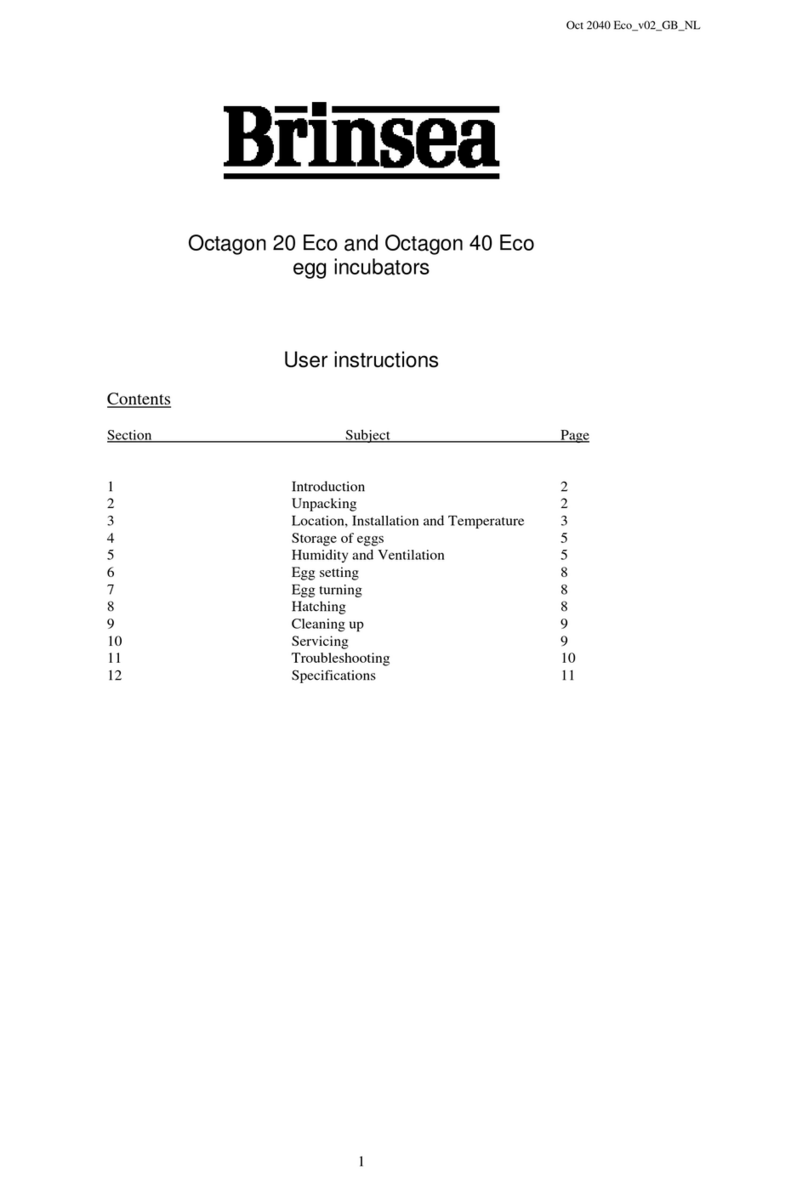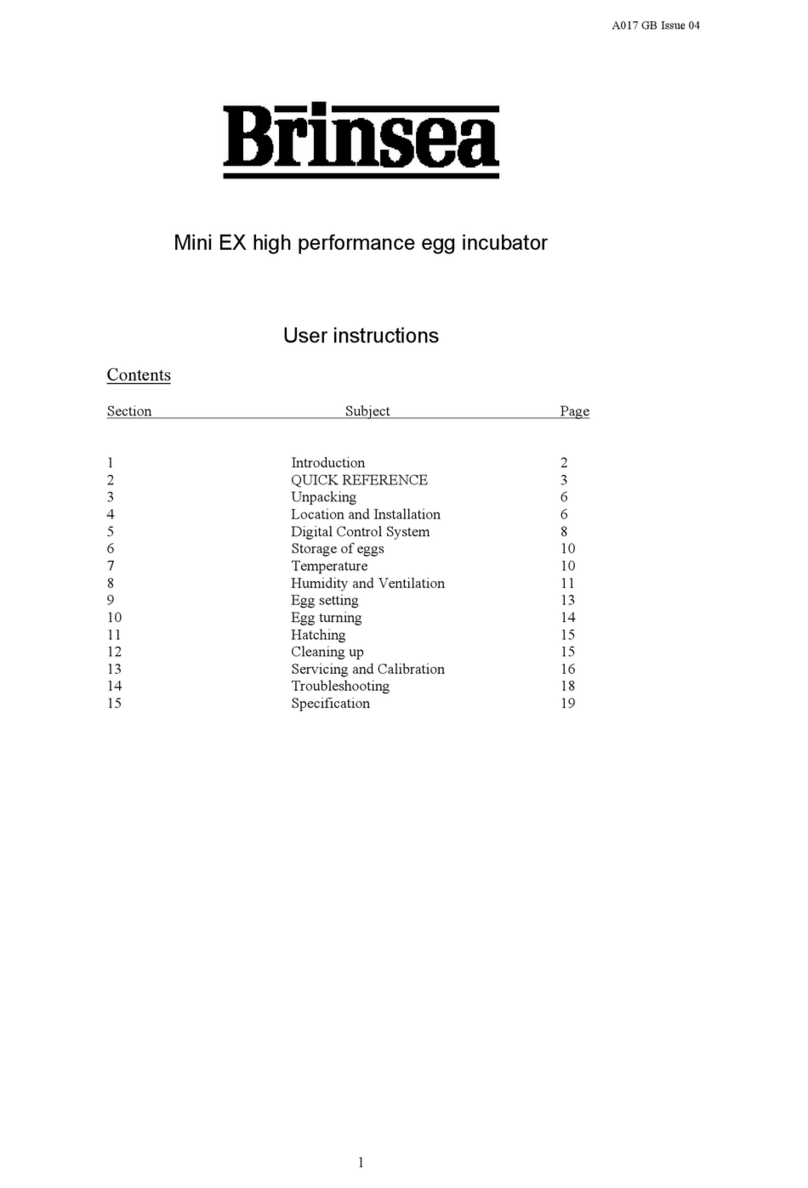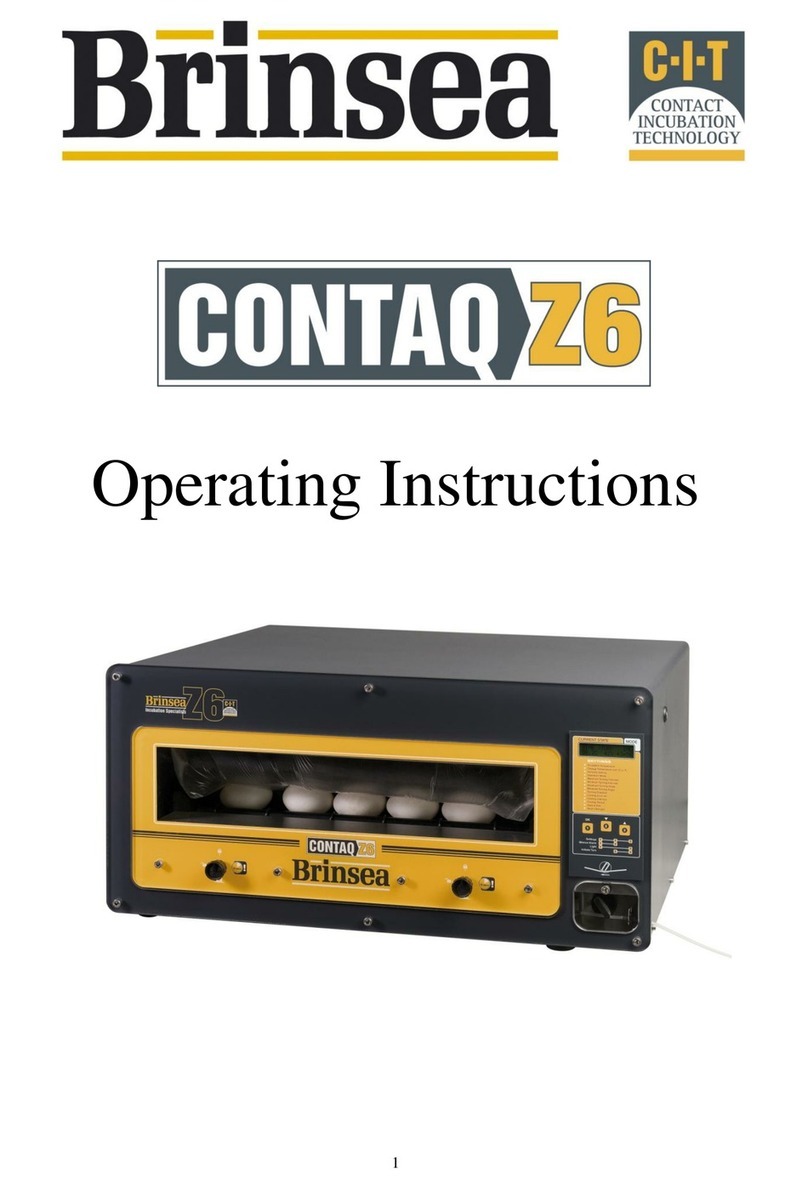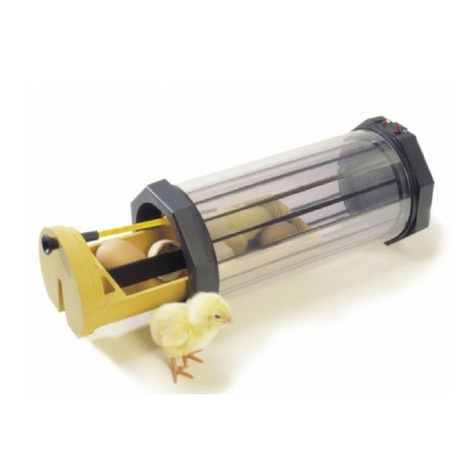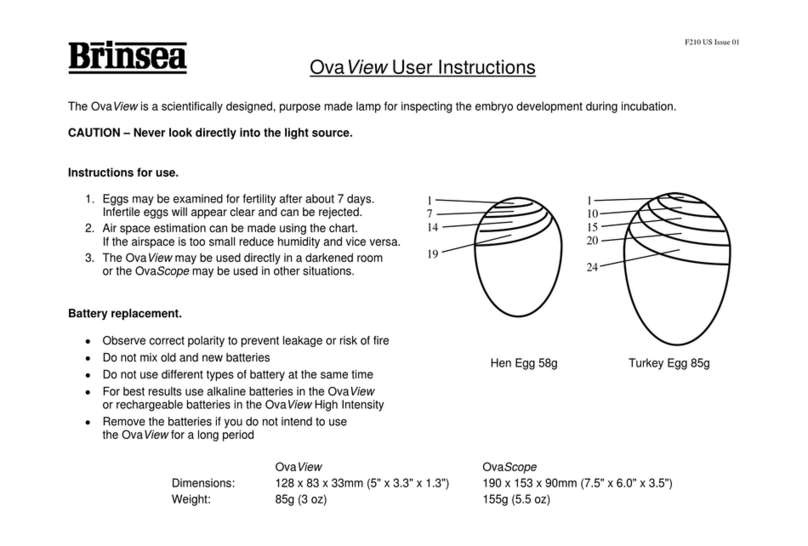
TLC40+50 Eco_v01_GB_NL
8
6.6 TEMPERATURE GUIDELINES FOR BROODING HATCHLING CHICKS. As a general rule a newly
hatched chick will need a brooder temperature a little lower than incubation temperature, about 35-36°C
(95-97°F) and the temperature can be reduced progressively at about 0.5°C (1°F) per day until it is fully
feathered or no longer requires supplementary heat. In warm ambient conditions this will be sooner than
in cold climates. When brooding temperatures are just above room temperature the asterisk heater
indicator may go out (indicating that no heat is being applied). This indicates that the birds are ready to be
moved to a nursery cage. If room temperature then drops (e.g. at night) then the birds can be kept warm
by replacing them into the TLC brooder.
6.7 Where there is to be a continuous throughput of birds of differing stages of development, several TLC
brooders can be set to different temperatures and the birds moved to cooler units as they grow.
6.8 The Recommended staged temperature settings for most parrots and falcons:
Days 1 to 5 Days 6 to 10 Days 11 to 15 Days 16 to 25
36°C (97°F) 33°C (91°F) 29.5°C (85°F) 27°C (80°F)
These temperatures have been found to promote optimal health and growth from newly hatched chicks
and are a little higher than may be found in nests. Where birds are taken from a nest after more than a
few days, the temperature setting will usually need to be a few degrees lower to prevent heat stress. The
recommendations above are for guidance only, always observe the chick’s behaviour (see below) to
verify setting.
Temperatures too high can cause heat stress, dehydration, deformities or haemorrhaging under the skin.
Low temperature may reduce appetite and retard growth. Observation of the bird is the best guide to its
comfort. Chicks try to huddle together if cold and move about seeking parental warmth. Chicks too warm
separate and pant. In either case they will complain vocally. Comfortable birds will lie quietly sleeping with
wings loosely folded at the sides, usually in contact with one another.
6.9 Developing chicks are fairly tolerant of short-term temperature drops but care should be taken about
cooling that occurs during feeding or inspection. Keep the room warm, hold the bird in a cloth to prevent
chilling from cold hands and use warmed feeding utensils.
7 Humidity and Ventilation
Elevated air temperatures in the TLC brooder will reduce the relative humidity level(RH) and can cause
dehydration. A water reservoir is fitted to counteract this effect.
7.1 Your TLC brooder is fitted with a water reservoir (see fig.1) which humidifies air as it is drawn into the
heater enclosure. Use a solution of Brinsea Incubation Disinfectant (1part concentrate to 100 parts water)
in the water reservoir (pan) to inhibit bacterial build-up. It is recommended that the reservoir is topped up
with solution daily to reduce dehydration. This can be a particular problem with chick(s).
7.2 The brooder and its occupants need not be disturbed to fill the water pan. Use the funnel provided to pour
water through the water fill point in the top of the brooder (see fig. 1) directly onto the evaporating block
and into the water pan. Push the funnel down gently into the hole to make sure the water pours directly in.
Clean up any spilled water from the top of the brooder immediately.
7.3 To further increase humidity levels within the brooder the water reservoir is fitted with an evaporating
block of absorbent paper mesh as standard. This block may be set across the water pan (instead of
upright) or removed entirely to give lower humidity levels if condensation forms. The block can provide a
breeding ground for bacteria. In addition to the use of Brinsea Incubation Disinfectant concentrate in the
water, it is recommended that the block is replaced every 2 months of use.
7.4 An adjustable vent is fitted to the door of the brooder which may be opened or closed to give greater
control of humidity (close vent to increase) and fresh air flow. The vent may be fully closed as fixed
ventilation is also provided.
